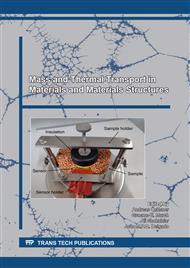[1]
Empresa De Pesquisa Energética. Balanço energético nacional. Information on http://www.epe.gov.br/pt/publicacoes-dados-abertos/publicacoes/balanco-energetico-nacional-2019/.
Google Scholar
[2]
G. Mørk, S. Barstow, A. Kabuth, M. Pontes, Assessing the Global Wave Energy Potential. ASME 2010 29th International Conference on ocean, offshore and Arctic Engineering. (2010).
DOI: 10.1115/omae2010-20473
Google Scholar
[3]
T.W. Thorpe. A brief review of wave energy, Technical report no. R120, Energy Technology Support Unit (ETSU), A report produced for the UK Department of Trade and Industry, (1999).
Google Scholar
[4]
J. Falnes. A review of wave-energy extraction. Marine Structures,2007, pp.185-201.
Google Scholar
[5]
A.F. de O. Falcão, Wave energy utilization: A review of the technologies. Renewable and Sustainable Energy Reviews, (2009).
Google Scholar
[6]
B. Drew, A.R. Plummer, M.N. Sahinkaya, A review of wave energy converter technology. Proceedings of the Institution of Mechanical Engineers, Part A: Journal of Power and Energy, 223(8), 2009, p.887–902.
DOI: 10.1243/09576509jpe782
Google Scholar
[7]
L.A.O. Rocha, S. Lorente, A. Bejan, Constructal Theory in Heat Transfer. Handbook of thermal science and engineering. [S.l.]: Springer, 2017, p.329–360.
DOI: 10.1007/978-3-319-26695-4_66
Google Scholar
[8]
A. Bejanl, M. Almogbel, Constructal T-shaped fins. International Journal of Heat and Mass Transfer. Vol. 43, 2000, pp.2101-2115.
DOI: 10.1016/s0017-9310(99)00283-5
Google Scholar
[9]
R.F. Dutra, F.S.F. Zinani, L.A.O. Rocha, C. Biserni, Constructal design of an arterial bypass graft. Heat Transfer, v. 49, 2020, pp.1-21.
DOI: 10.1002/htj.21693
Google Scholar
[10]
M.N. Gomes, Constructal Design de Dispositivos Conversores de energia das ondas do mar em energia elétrica do tipo coluna da água oscilante, (2014).
DOI: 10.14808/sci.plena.2017.049915
Google Scholar
[11]
T.G. Barreiro, Estudo da interação de uma onda monocromática com um conversor de energia, Lisbon, (2009).
Google Scholar
[12]
Z. Liu, B.S. Hyun, K. Hong, Numerical study of air chamber for oscillating water column wave energy convertor. China Ocean Engineering, [S.l.], 2011, p.169–178.
DOI: 10.1007/s13344-011-0015-8
Google Scholar
[13]
G. Zhou, K. Kun, F. Liu, Grid-converged Solution and Analysis of the Unsteady Viscous Flow in a Two-dimensional Shock Tube. Journal of Fluid Mechanics, (2017).
Google Scholar
[14]
P.J. Roache, Quantification of uncertainty in computational fluid dynamics. Annual Review of Fluid Mechanics 29, 1994, p.123–160.
DOI: 10.1146/annurev.fluid.29.1.123
Google Scholar
[15]
I.A. Rodrigues, Estudo do Galgamento em Conversor de Ondas Oceânicas. Lisbon, (2017).
Google Scholar
[16]
D.E. Coleman, D.C.A Montegomery, A systematic approach to planning for a designed industrial experiment. Technometrics, 1993, v. 35, ed. 1.
Google Scholar
[17]
D. Bas, I.H. Boyac, Modeling and optimization I: Usability of response surface methodology. Journal of Food Engineering, v. 78, n. 3, 2007, p.836–845.
Google Scholar
[18]
C.F. Cardozo, Estudo numérico de um conversor coluna de água oscilante através do método Design Construtal. (2020).
DOI: 10.5380/rber.v6i3.52983
Google Scholar
[19]
D.Z. Ning, An experimental investigation of hydrodynamics of a fixed OWC Wave Energy Converter. Applied Energy, v. 168, 2016, p.636–648.
DOI: 10.1016/j.apenergy.2016.01.107
Google Scholar
[20]
M. das. N. Gomes, G. Lorenzini, L.A.O. Rocha, Constructal Design Applied to the Geometric Evaluation of an Oscillating Water Column Wave Energy Converter Considering Different Real Scale Wave Periods. Journal of Engineering thermophysics. v. 27, No. 2, 2018, p.173–190.
DOI: 10.1134/s1810232818020042
Google Scholar


